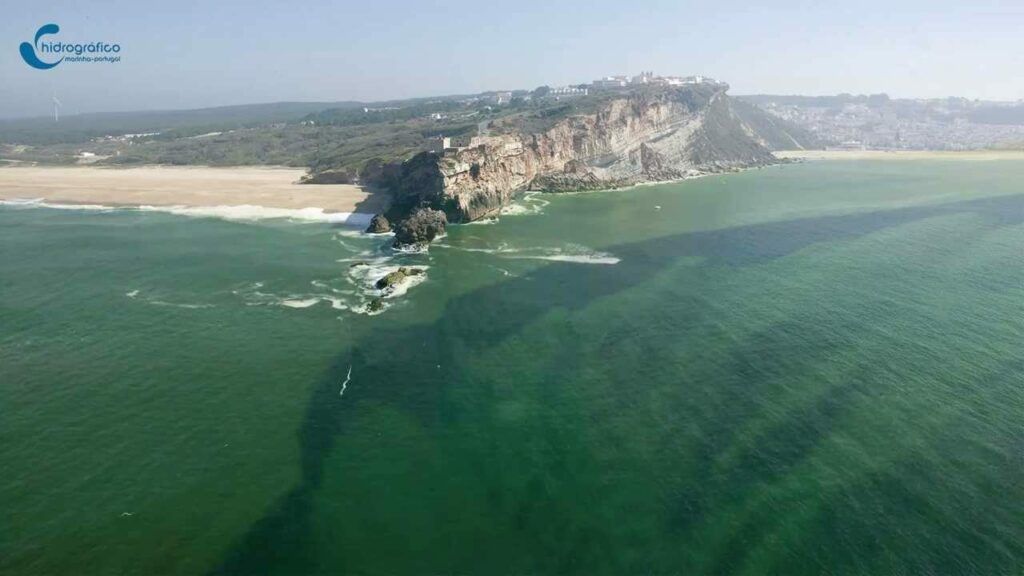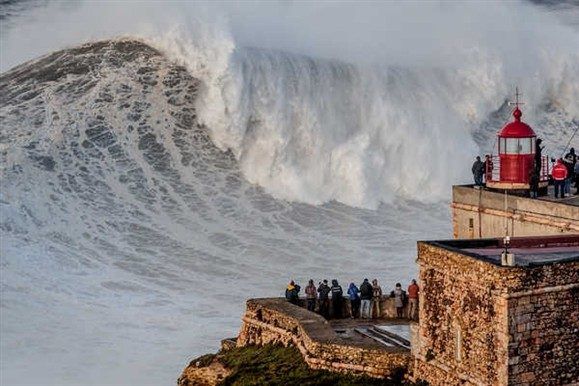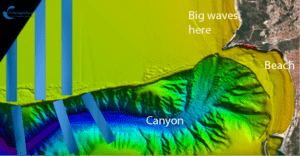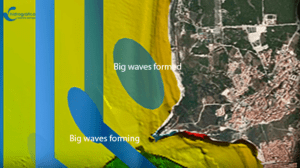Living in a country where the majority of people know little to nothing about my beloved Portugal can be very frustrating at times, saddening at others and on the rare occasion it can even make me really angry! This anger, let it be known, is almost always preceded by “so do you speak Spanish?”. (Argh! Don’t get me started!) So I’m actually happy when people say, “Portugal? Cristiano Ronaldo!” because at least that’s true! Now, when a new acquaintance immediately says something like “Portugal. Isn’t that where they have those huge waves?”, I get the biggest grin on my face. “Yes!” I reply, “They’re in Nazaré! Aren’t they incredible?”
Nazaré waves have gained notoriety over recent years due to the famous surfing world records that have been achieved or attempted there. If you look at the 3 minute mark on the video below, you can watch pro surfer Garrett McNamara set the world record for the largest wave ever surfed… a whopping 100 ft wave! This took place in 2013, two years after his previous 78-foot world record, which also took place in Nazaré.
Scary as these waves may seem, Nazaré is actually known for its beach, which is actually pretty calm. The beach can be found just south of these giant waves; the two are separated by a cliff that sticks out further into the ocean. But the scientific explanation for discrepancy between the massive waves and the calm beach lies underwater: the largest undersea canyon in Europe, known as the Nazaré Canyon, whose maximum depth reaches 5,000 meters (16,000 ft).
The location of the canyon means that waves are forming exactly as they do in deep waters far from the coast, instead of being incrementally compressed like they normally do as they approach shallower waters. As they follow the shape of the canyon north (away from the calm beach), they eventually and very suddenly hit shallow waters north of the canyon and become quickly compressed, which causes the giant waves. The size of the waves is augmented further by the meeting of these waves with the “regular” waves who were just minding their own business and heading to the shore before these big waves swallowed them up. I used some stills from a video by the Instituto Hidrográfico in Portugal, to explain this process a bit better. If you speak Portuguese, this video explains it all very well.

So there you have it: mystery solved! These majestic waves are now one of Portugal’s claims to fame. Next time someone excitedly says “Cristiano Ronaldo” to me, I’ll reply with “Yes! But not only are we good at soccer/football, we also conquered the seas. Have you heard of Magellan or Vasco da Gama?… Or Nazaré’s waves?”
Top image c/o DN.pt




